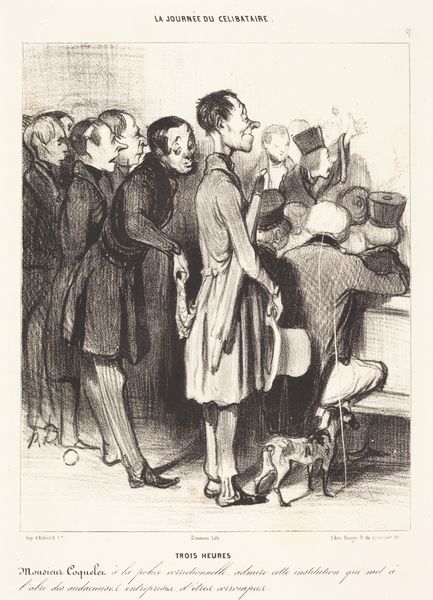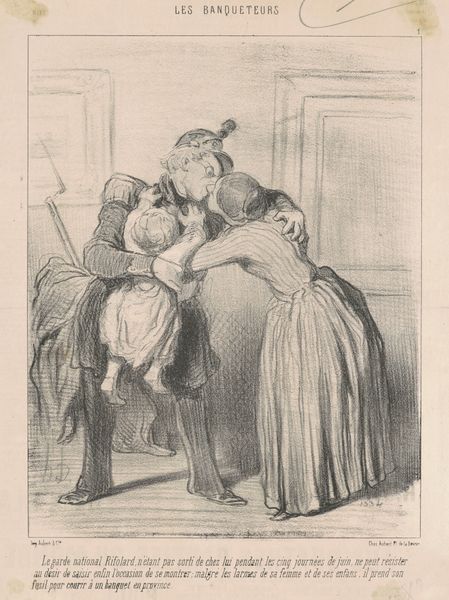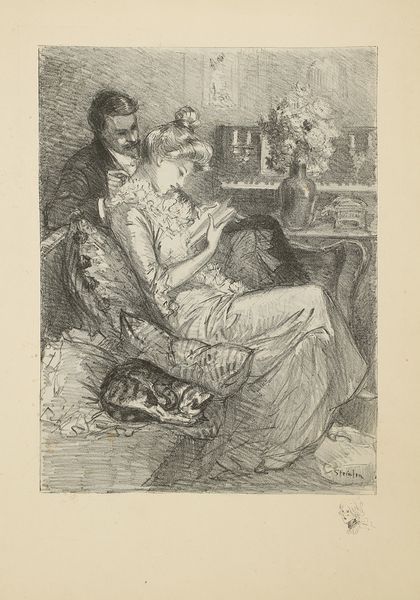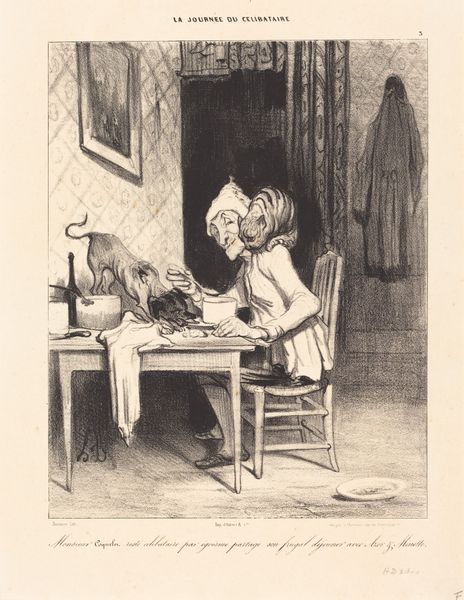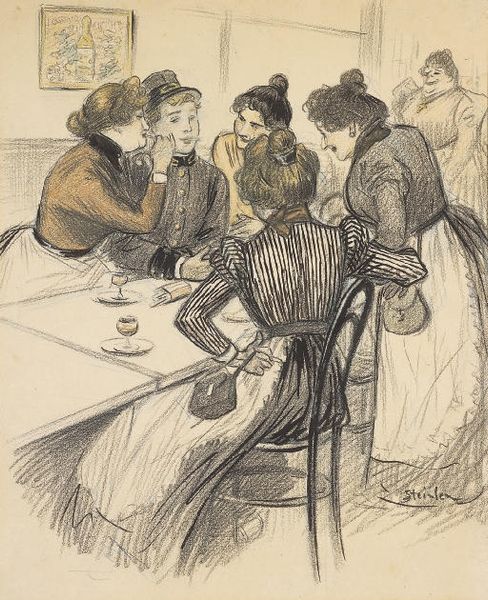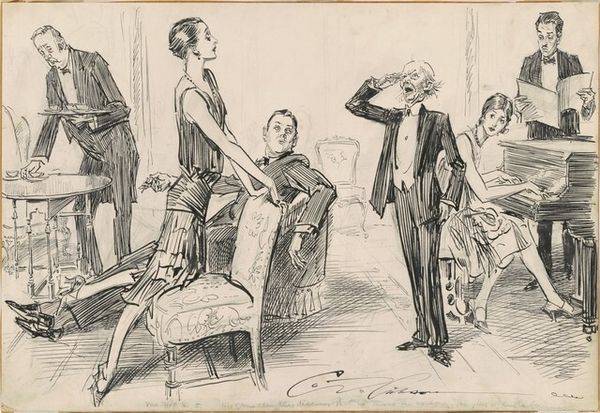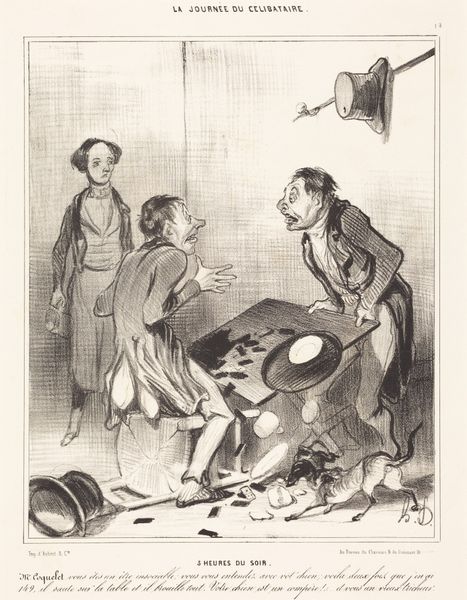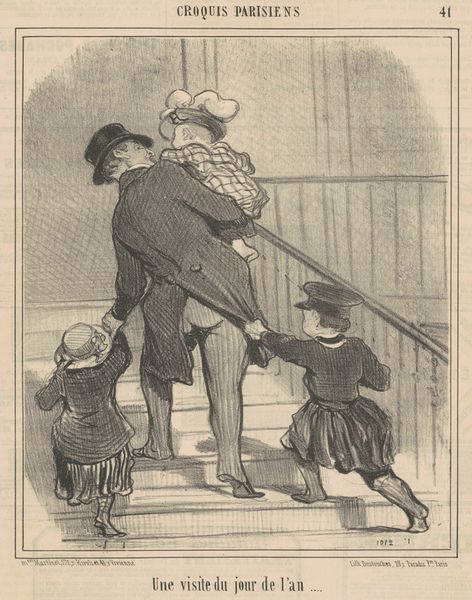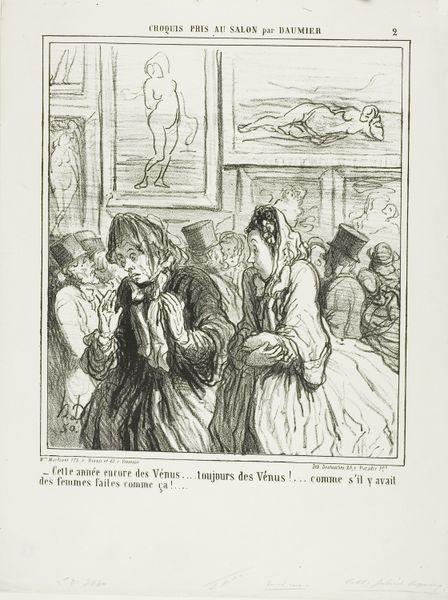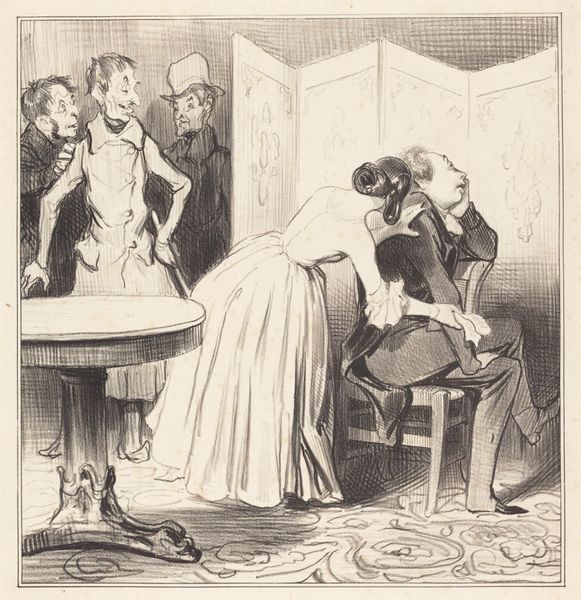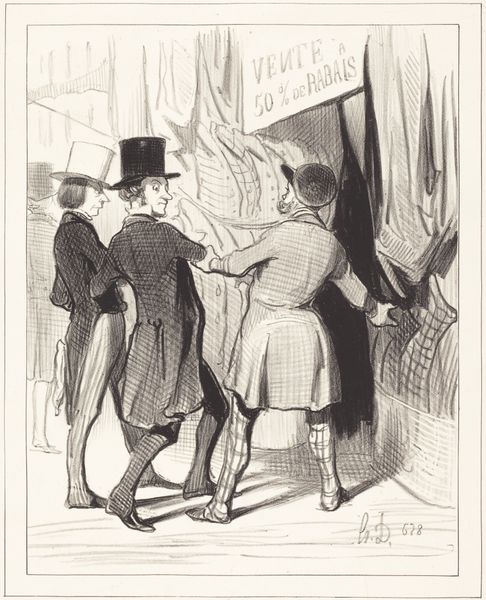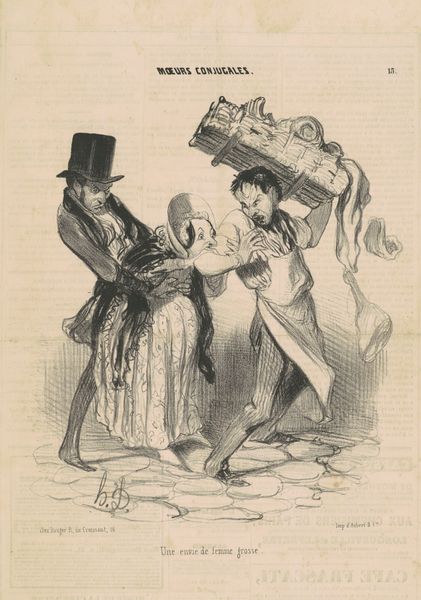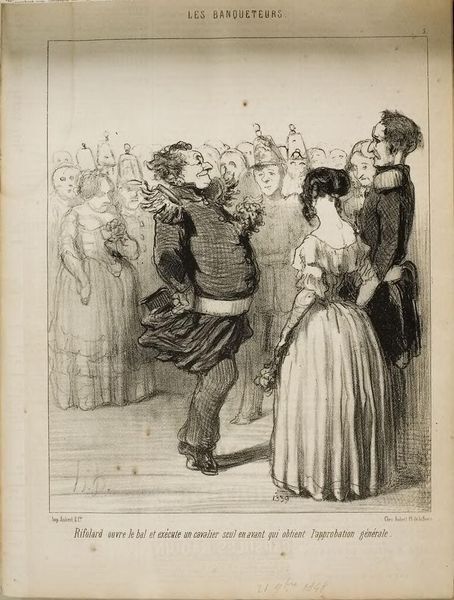
Copyright: Public domain
Editor: This is “Envoi de Fleurs” by Théophile Alexandre Steinlen, created around 1899 using pen, ink, and charcoal on paper. The scene depicts people in a cafe, seemingly in conversation or transaction with a flower girl. It strikes me as a poignant snapshot of Parisian life; the characters rendered in expressive, almost frenetic lines. What structural elements do you find most compelling? Curator: Note how Steinlen utilizes varying densities of line work to create depth. The foreground figures possess sharp outlines, contrasting with the blurred cityscape outside the window. Observe how this contrast directs the eye—the central figures take precedence because of their formal clarity. What message emerges through such carefully-considered visual prioritization? Editor: It's a rather busy composition, yet the focal point seems to remain with the man inspecting the bouquet, despite the activity surrounding him. The geometry created by the table and window frames provide this central framing device. Curator: Precisely. The geometric scaffolding serves as the anchor. Now, reflect on how the repetition of circular forms, from the hats to the fountain visible outside, interacts with this rigid framework. Is it pure accident, or is there an intended dialogue? Editor: Perhaps this is a visual technique to soften what could have been rigid lines; allowing it to feel as vibrant as an image that could've been created outdoors instead of inside of a building. Curator: Interesting thought. Ultimately, it shows how a deeper look reveals calculated choices related to semiotics and compositional theory rather than just the everyday documentation it initially appears to be. What initially reads as a mere snapshot, becomes something considerably more constructed. Editor: Definitely. I'll have to apply that attention to detail when viewing other artworks moving forward. Thank you.
Comments
No comments
Be the first to comment and join the conversation on the ultimate creative platform.
